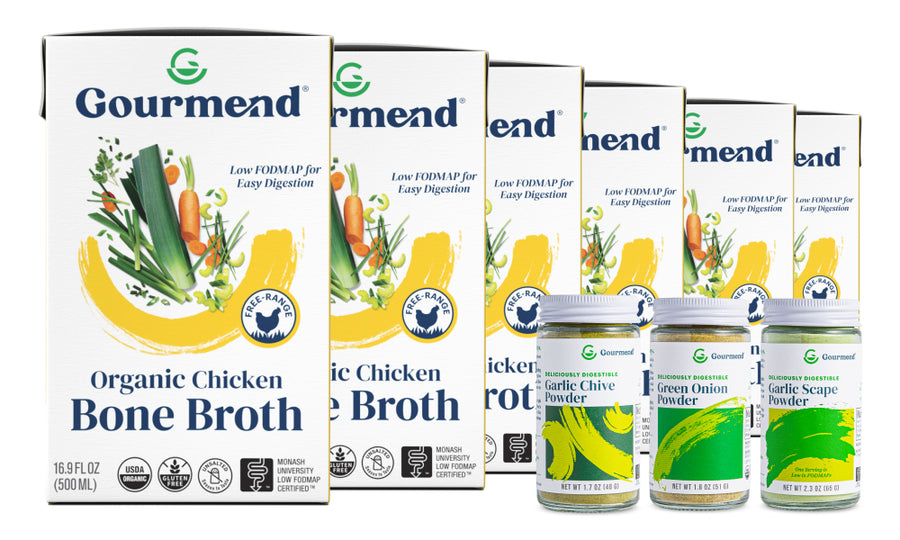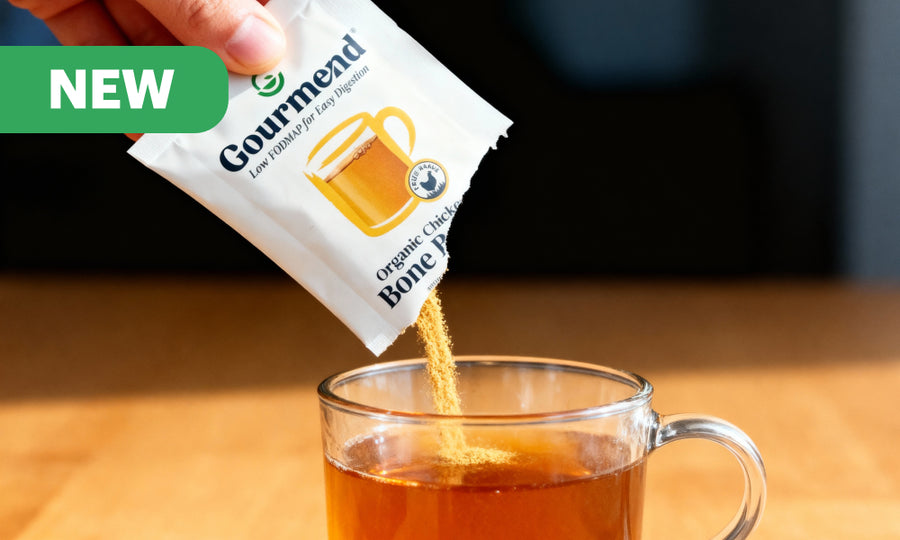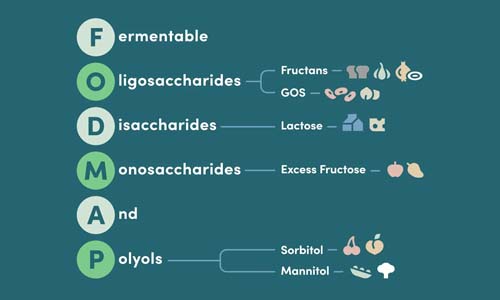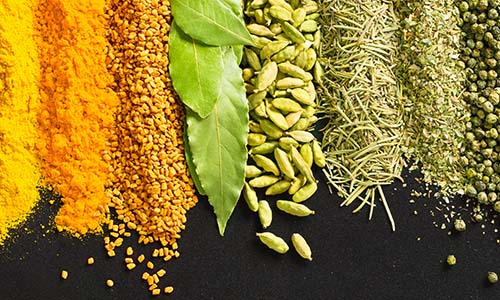Is Pumpkin Low FODMAP? The Definitive Guide

Key Takeaways
- Most pumpkin varieties are low FODMAP when consumed in controlled portions.
- Choosing the right type of pumpkin is essential for maintaining low FODMAP intake.
- Recommended serving sizes are typically between one-third to one-half cup of cooked pumpkin flesh.
- Sticking to tested portion sizes helps prevent FODMAP-related digestive issues.
Table of Contents
- Is Pumpkin Low FODMAP? Your Quick Answer
- Low FODMAP Pumpkin Varieties, Your Shopping Roadmap
- The Science Behind Pumpkin's FODMAP Profile
- Portion Control, Your Digestive Safety Net
- Pumpkin Prep in the Low FODMAP Kitchen, Selecting, Cooking, and Swapping Like a Pro
- Low FODMAP Pumpkin Recipes, Savory and Sweet for Every Table
- Pumpkin Versus the Competition, Low FODMAP Showdowns
- Problem-Solving: Troubleshooting Pumpkin on a Low FODMAP Diet
- Resources for Gourmet, Gut-Friendly Living
Is Pumpkin Low FODMAP? Your Quick Answer
Yes, most pumpkin varieties are low FODMAP when enjoyed in the right portions. The key is choosing the right type and sticking to tested serving sizes. Read on for a gourmet, gut-friendly approach to pumpkin in your kitchen.
Low FODMAP Pumpkin Varieties, Your Shopping Roadmap

Not all pumpkins are created equal in the FODMAP pumpkin world. Monash University's lab testing reveals significant differences between varieties, making your produce aisle selection crucial for digestive success.
For those interested in how other vegetables compare, you might find it helpful to read about is avocado low FODMAP for a broader understanding of FODMAP-friendly produce.
| Pumpkin Type | Low FODMAP Serving | Main FODMAPs | Best Preparation |
|---|---|---|---|
| Butternut Squash | 65g (⅓ cup cooked) | Mannitol, GOS | Roasted, pureed |
| Japanese Pumpkin (Kabocha) | 65g (⅓ cup cooked) | Low across all FODMAPs | Steamed, roasted |
| Canned Pumpkin (pure) | 60g (¼ cup) | Varies by processing | Ready to use |
| Acorn Squash | 65g (⅓ cup cooked) | Moderate mannitol | Baked, mashed |
Japanese pumpkin emerges as the champion for sensitive stomachs, testing green across all FODMAP categories in standard portions. Its naturally sweet, creamy flesh requires minimal seasoning, perfect for showcasing clean flavors without digestive compromise.
When shopping, ask vendors specifically about pumpkin variety rather than accepting generic "pumpkin" labels. Many farmers markets mix varieties, and knowing whether you're buying butternut versus kabocha directly impacts your safe serving size. For canned options, choose 100% pumpkin puree without added spices, which often contain high-FODMAP ingredients like garlic powder.
The Science Behind Pumpkin's FODMAP Profile
Pumpkin's FODMAP content centers on two primary compounds: mannitol (a polyol) and galacto-oligosaccharides. Mannitol, naturally occurring in pumpkin cell walls, can trigger osmotic effects in sensitive individuals, essentially drawing water into the intestines and potentially causing loose stools or cramping.
Processing dramatically alters FODMAP levels. Roasting concentrates natural sugars while breaking down some FODMAP structures, often making cooked pumpkin more tolerable than raw. Canning introduces variables through heat processing and potential additives, which explains why fodmap pumpkin tolerance varies between fresh and processed versions.
Monash University's testing methodology involves sophisticated laboratory analysis measuring exact FODMAP concentrations per 100g serving. Their traffic light system, green (low), amber (moderate), red (high), provides precise thresholds rather than vague guidelines. This scientific rigor explains why we can confidently recommend specific gram measurements rather than generic "small portions."
Individual tolerance varies based on gut bacteria composition, intestinal permeability, and overall FODMAP load from other foods consumed simultaneously. This biological reality means starting conservatively with tested portions, then gradually increasing based on personal response patterns.
Portion Control, Your Digestive Safety Net
The threshold effect governs FODMAP tolerance: small amounts may cause zero symptoms, while slightly larger portions trigger significant discomfort. This principle makes precise measurement your most valuable kitchen tool when determining if is pumpkin low FODMAP for your individual tolerance.
For butternut squash, 65g represents the tested low FODMAP threshold, roughly ⅓ cup of cooked, cubed flesh. Exceeding this amount introduces moderate FODMAP levels that may trigger symptoms in sensitive individuals. However, 30g portions remain safely in the green zone for virtually everyone following low FODMAP protocols.
Visual cues help when scales aren't available: ⅓ cup cooked pumpkin equals approximately the size of a tennis ball when mashed, or 6-8 standard cubes when diced. For canned pumpkin, ¼ cup represents the perfect amount for most low FODMAP serving sizes. When dining out or preparing family portions, err on the side of caution, you can always add more to your plate if you tolerate the initial serving well.
What happens if you accidentally overindulge? During holiday gatherings, it's easy to lose track of portions when pumpkin appears in multiple dishes. If you've exceeded your threshold, stay hydrated and consider spacing out your next FODMAP-containing meal by a few hours. Your digestive system typically resets within 24-48 hours, so one slip-up won't derail your progress.
Remember that individual tolerance varies significantly. Some Gourmend customers find they can handle larger portions of certain pumpkin varieties, while others need to stick strictly to tested serving sizes. Start conservatively and gradually increase portions based on your personal response.
Pumpkin Prep in the Low FODMAP Kitchen, Selecting, Cooking, and Swapping Like a Pro

Smart shopping begins in the produce aisle. Fresh pumpkins should feel heavy for their size with unblemished skin, while canned options require careful label scrutiny. Look for products with a single ingredient: pumpkin. Avoid varieties with added spices, sugars, or "natural flavors" that might contain high FODMAP ingredients.
Fresh preparation maximizes both flavor and FODMAP control. Always peel sugar pumpkins and butternut squash completely, the skin contains higher concentrations of FODMAPs. Cut into uniform cubes for even cooking, then roast at 400°F for 25-30 minutes until fork-tender. This method concentrates sweetness while maintaining the low FODMAP profile.
Canned pumpkin offers convenience but demands vigilance. Stick to brands that have undergone FODMAP testing or choose organic varieties with minimal processing. Store opened cans in glass containers for up to five days, or freeze in ice cube trays for perfect portion control, each cube typically equals about 2 tablespoons.
Strategic ingredient swapping transforms high FODMAP recipes into gut-friendly masterpieces. Replace sweet potatoes with equal amounts of peeled pumpkin in soups and stews. When recipes call for butternut squash beyond the ⅓ cup limit, substitute half the amount with low FODMAP alternatives like carrots or parsnips. For depth of flavor traditionally provided by garlic and onions, reach for Gourmend shelf-stable broth carton, our broths use chives, scallion greens, and leek tops for that essential aromatic foundation.
Common prep mistakes can sabotage even the most careful planning. Never assume all orange squashes are interchangeable, acorn squash has different FODMAP limits than sugar pumpkin. Avoid pre-seasoned varieties, and always weigh your portions after cooking, as water content changes during the roasting process. When in doubt, prepare smaller batches and freeze extras rather than risk overconsumption.
Low FODMAP Pumpkin Recipes, Savory and Sweet for Every Table
Pumpkin doesn't require compromise when is pumpkin low fodmap becomes your guiding principle. The key lies in building layers of flavor through FODMAP-friendly ingredients that deliver the complexity your palate craves. Our approach centers on umami-rich foundations: nori seaweed, oyster mushrooms, and aromatic greens that create depth without digestive distress.
If you're looking for more creative ways to enjoy low FODMAP meals, try this simple low FODMAP gourmet risotto for a comforting and gut-friendly option.
Gourmend's Flavor Secret
We achieve restaurant-quality taste using chives, scallion greens, leek tops, nori seaweed, and oyster mushrooms, never garlic bulbs or onions. This combination delivers the savory foundation that makes pumpkin dishes memorable.
Classic Roasted Pumpkin Soup showcases how restriction breeds creativity. Start with 2 cups cubed sugar pumpkin (⅓ cup per serving for 6 portions), roasted until caramelized. Simmer in Gourmend shelf-stable broth carton with fresh thyme, a pinch of nutmeg, and coconut milk for richness. The result? Silky, sophisticated comfort food that happens to be gentle on digestion.
Low FODMAP Pumpkin Breakfast Muffins prove that morning treats need not trigger afternoon regret. Combine ¼ cup pumpkin purée with oat flour (limit ½ cup per serving), eggs, maple syrup, and warming spices. These muffins freeze beautifully and provide sustained energy without the blood sugar spike of conventional baked goods.
Pumpkin seed perfection deserves special attention. Roast cleaned seeds with olive oil and sea salt at 300°F for 20 minutes. A 2-tablespoon serving remains low FODMAP while delivering protein, healthy fats, and satisfying crunch. They're perfect sprinkled over salads or enjoyed as an afternoon snack.
For dessert enthusiasts, reimagined pumpkin pie uses a gluten-free oat crust and silky custard made with ⅓ cup pumpkin purée per slice, eggs, coconut cream, and maple syrup. Traditional spices, cinnamon, ginger, and nutmeg, provide warmth without FODMAP concerns. The result rivals any conventional version while supporting digestive wellness.
Explore more creative applications through Gourmend's recipe collection, where each dish balances gourmet ambition with gut-friendly principles. From pumpkin risotto to spiced breakfast pancakes, the possibilities multiply when you understand the science behind safe preparation.
Pumpkin Versus the Competition, Low FODMAP Showdowns
Understanding how pumpkin fodmap profiles stack up against similar vegetables helps you make strategic choices for both flavor and digestive comfort. Each orange-hued option brings distinct advantages, but serving sizes and FODMAP loads vary significantly.
| Vegetable | Low FODMAP Serving | Primary FODMAPs | Texture Profile | Best Uses |
|---|---|---|---|---|
| Sugar Pumpkin | ⅓ cup (75g) | Mannitol, GOS | Dense, sweet | Soups, pies, roasting |
| Butternut Squash | ⅓ cup (65g) | Mannitol | Smooth, nutty | Purees, pasta sauces |
| Kabocha Squash | ⅓ cup (70g) | Mannitol, GOS | Creamy, rich | Tempura, curries |
| Sweet Potato | ⅓ cup (70g) | Mannitol | Moist, earthy | Baking, fries |
| Acorn Squash | ¼ cup (60g) | GOS, Mannitol | Fibrous, mild | Stuffing, roasting |
Pumpkin versus sweet potato presents an interesting trade-off. While both offer similar serving sizes, sweet potatoes provide more consistent year-round availability and easier preparation. However, sugar pumpkins deliver superior flavor complexity for seasonal dishes and maintain their texture better in soups when combined with Gourmend shelf-stable broth carton.
Seed comparisons favor pumpkin seeds over many alternatives. At 2 tablespoons per serving, they remain low FODMAP while delivering more protein than sunflower seeds and superior mineral content. Their neutral flavor profile makes them ideal for both sweet and savory applications.
Strategic swapping becomes crucial when recipes exceed safe portions. Replace half the butternut squash in a large batch soup with carrots or parsnips to maintain volume while reducing FODMAP load. For texture-sensitive dishes like risotto, kabocha squash provides the creamiest consistency within safe serving limits.
The winner depends on your priorities: choose sugar pumpkin for maximum flavor impact, butternut for smoothest texture, or sweet potato for convenience. All excel when properly portioned and enhanced with low FODMAP aromatics.
Problem-Solving: Troubleshooting Pumpkin on a Low FODMAP Diet

Even careful planning can lead to digestive surprises when fodmap pumpkin reactions occur unexpectedly. The most common culprits include portion miscalculation, variety confusion, or hidden ingredients in processed products. Understanding these triggers helps you course-correct quickly and confidently.
For a hearty dinner idea that fits the low FODMAP lifestyle, you might enjoy this low FODMAP braised short ribs recipe.
Immediate symptom management focuses on gentle support rather than panic. If you experience bloating or discomfort after pumpkin consumption, increase water intake and consider light movement like walking. Symptoms typically peak within 2-4 hours and resolve within 24-48 hours as FODMAPs move through your system.
Recipe rescue strategies save over-portioned dishes from waste. Divide large batches immediately after cooking, freeze individual portions in ⅓ cup containers for future low FODMAP meals. When restaurant dishes arrive with unknown pumpkin quantities, eat conservatively and request extra vegetables or rice to balance the meal.
Product verification prevents repeat reactions. Always photograph labels of products that cause symptoms for future reference. Canned pumpkin brands vary significantly in processing methods, and even "pure" pumpkin can have different FODMAP concentrations based on variety and harvest conditions. When in doubt, switch brands and retest your tolerance.
Quick Problem Solver
Unexpected reaction? Check these factors: Did you weigh portions after cooking? Was the pumpkin variety lab-tested? Did other meal components contain FODMAPs? Cross-reactions with garlic, onions, or high-fiber foods can amplify pumpkin's effects.
Professional guidance becomes valuable when patterns emerge. If you consistently react to verified low FODMAP pumpkin portions, consider working with a FODMAP-trained dietitian to assess other dietary factors or explore individual tolerance variations. Some people require smaller portions during high-stress periods or when combining multiple FODMAP sources in one day.
Resources for Gourmet, Gut-Friendly Living
Reliable information sources make the difference between guesswork and confident cooking when navigating is pumpkin low fodmap decisions. The Monash University FODMAP app provides the gold standard for laboratory-tested serving sizes, while the FODMAP Friendly app offers additional product certifications from independent testing.
Gourmend's approach to low FODMAP cooking eliminates common flavor gaps through scientifically-backed ingredient selection. Our broths and seasonings use chives, scallion greens, leek tops, nori seaweed, and oyster mushrooms for gourmet depth, never high FODMAP ingredients. For more inspiration, explore our recipe collection and try our Low FODMAP Recipe Conversion Tool to adapt your favorite dishes for easier digestion.
Frequently Asked Questions
Can I eat pumpkin on a fodmap diet?
Yes, you can enjoy pumpkin on a low FODMAP diet when you choose the right variety and stick to recommended serving sizes, typically around one-third to one-half cup of cooked pumpkin. Japanese pumpkin (kabocha) is especially low FODMAP, while butternut and acorn squash are safe in controlled portions. Always opt for plain canned pumpkin puree without added high FODMAP ingredients for convenience and digestive ease.





